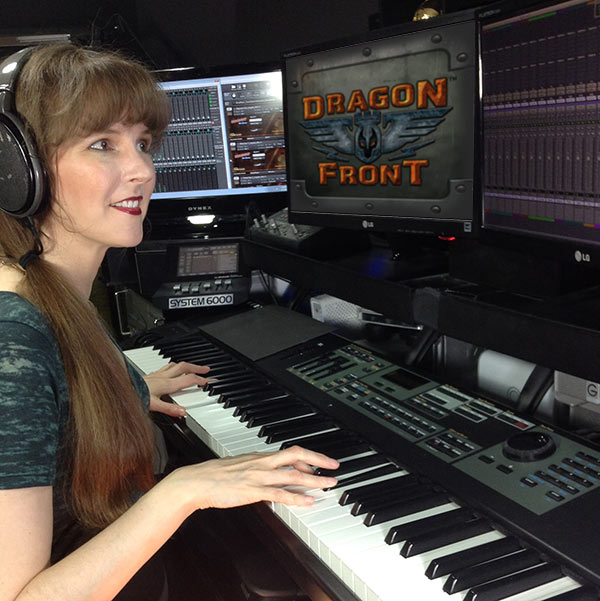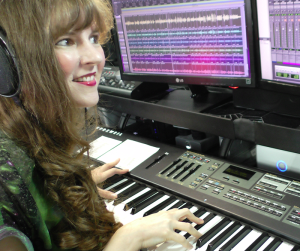Trending
Opinion: How will Project 2025 impact game developers?
The Heritage Foundation's manifesto for the possible next administration could do great harm to many, including large portions of the game development community.

Featured Blog | This community-written post highlights the best of what the game industry has to offer. Read more like it on the Game Developer Blogs or learn how to Submit Your Own Blog Post
The 3rd of a 5-part series. Video game composer Winifred Phillips shares strategies from her GDC 2017 talk, Homefront to God of War: Using Music to Build Suspense. Part 3: Creepy Clusters, exploring the psychology of dissonance & tips for using it well.

 By Winifred Phillips | Contact | Follow
By Winifred Phillips | Contact | Follow
Welcome back to our five part discussion of the role that video game music can play in enhancing tension and promoting suspenseful gameplay! These articles are based on the presentation I gave at this year's Game Developers Conference in San Francisco, entitled Homefront to God of War: Using Music to Build Suspense. If you haven't read the previous two articles, you'll find them here:
So, now that we’ve discussed ominous atmospheres and jarring jolts, let’s look at the next technique in our arsenal:
 As we know, tone clusters are collections of notes packed together to produce unnerving dissonant effects. While it might seem like any cat can walk across a piano and produce unpleasant clusters, well-executed dissonance is actually one of the trickiest techniques we can employ. It’s tremendously potent when used with expert precision.
As we know, tone clusters are collections of notes packed together to produce unnerving dissonant effects. While it might seem like any cat can walk across a piano and produce unpleasant clusters, well-executed dissonance is actually one of the trickiest techniques we can employ. It’s tremendously potent when used with expert precision.
Why do human beings respond so intensely to dissonance? Professor Michael Epstein of Northeastern University’s Auditory Modeling and Processing Lab has devoted over 20 years of expert research into why certain sounds have the power to instantly incite and deepen fear in listeners. He tells Boston Magazine that “common musical intervals, changed slightly to create dissonance, are immediately disconcerting.” According to Epstein, “very precise noises trigger human fear and discomfort."
 In fact, human beings seem to be hardwired to react negatively to dissonance. In a study conducted by the Department of Psychology at Harvard, researchers revealed that infants as young as 4 months old recognize and actively reject musical dissonance as upsetting and undesirable.
In fact, human beings seem to be hardwired to react negatively to dissonance. In a study conducted by the Department of Psychology at Harvard, researchers revealed that infants as young as 4 months old recognize and actively reject musical dissonance as upsetting and undesirable.
With this in mind, video game music composers can predictably induce the most negative emotions by using unnerving tone clusters. So, how do we put these dissonant intervals to the best use?
 Here’s an example, from of all things, SimAnimals -- a cheerful and whimsical game from the famous Sims franchise. In SimAnimals, players are encouraged to nurture the natural world until they create an animal utopia… but sometimes bad things happen to good animals.
Here’s an example, from of all things, SimAnimals -- a cheerful and whimsical game from the famous Sims franchise. In SimAnimals, players are encouraged to nurture the natural world until they create an animal utopia… but sometimes bad things happen to good animals.
As the composer for this game, I had to create music that let the player know things were heading south. So I created a dissonant variation on the main theme music I’d written for the game. Here’s an excerpt of my original, cheerful theme for EA’s SimAnimals:
Now, here’s the creepy version I wrote for when your animal world is not going so well:
The creepy version with the dissonant intervals and repeating clusters took a cheerful song about happy woodland creatures and made it a tense, suspenseful dirge. Now, let's take that a step further.
 When I wrote music for a particularly creepy faction in my score for High Voltage Software's popular virtual reality game Dragon Front, I used clusters and dissonant swells as the centerpiece of the track.
When I wrote music for a particularly creepy faction in my score for High Voltage Software's popular virtual reality game Dragon Front, I used clusters and dissonant swells as the centerpiece of the track.
I wanted the music for this faction to be so thoroughly concentrated on clusters and dissonant intervals that the player would never feel any sense of musical closure or resolve.
So let's see how that worked:
So this concludes part three of this five part series that expands on the materials I included in my GDC 2017 talk, "Homefront to God of War: Using Music to Build Suspense." We'll continue this discussion in part four of this article series, which will explore the 'Drones of Dread' technique. The article will also include an exploration of the use of Drones of Dread in my music for the God of War video game from Sony Computer Entertainment. In the meantime, please feel free to share your thoughts in the comments section below!
 Winifred Phillips is an award-winning video game music composer whose most recent project is the triple-A first person shooter Homefront: The Revolution. Her credits include games in five of the most famous and popular franchises in gaming: Assassin’s Creed, LittleBigPlanet, Total War, God of War, and The Sims. She is the author of the award-winning bestseller A COMPOSER'S GUIDE TO GAME MUSIC, published by the MIT Press. As a VR game music expert, she writes frequently on the future of music in virtual reality games.
Winifred Phillips is an award-winning video game music composer whose most recent project is the triple-A first person shooter Homefront: The Revolution. Her credits include games in five of the most famous and popular franchises in gaming: Assassin’s Creed, LittleBigPlanet, Total War, God of War, and The Sims. She is the author of the award-winning bestseller A COMPOSER'S GUIDE TO GAME MUSIC, published by the MIT Press. As a VR game music expert, she writes frequently on the future of music in virtual reality games.
Follow her on Twitter @winphillips.
Read more about:
Featured BlogsYou May Also Like